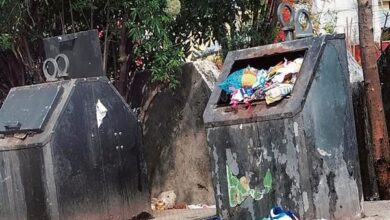Kerala: “Kaliithattu” buildings, tormented by time, need repair
Two almost 500-year-old “kalithattu” monuments on the grounds of the Vattakkad Devi temple in Vallikunnam are in a deteriorated condition; they were formerly an attraction in and of themselves. Numerous petitions have been sent to the state archeological department asking for the restoration of the elevated gazebo-like buildings, which were formerly utilized as rest areas by tired travelers.

The top of one of the buildings is half ruined, and the elaborate carvings on the wooden pillars have all but disappeared because of a lack of protection.
As to K Shaji, the secretary of the temple advisory council, the kalithattu are said to have been constructed between five and six centuries ago. He continues, “Vallikunnam was a notable stop on the royal map at the time.”
At that time, the temple was situated along the major road that carried hundreds of people every day from Mavelikkara to Kollam. The majority of the travelers were traders, who carried their goods above.
They used to take breaks along the route at the two kalithattu buildings, one on the north side of the temple and the other on the south. Although the temple advisory board used to provide upkeep, Shaji said that it was insufficient to save the historic buildings.
Inhabitants claim that the absence of scientific safeguarding caused the wooden engravings to be destroyed. The temple officials had one of the buildings’ wooden platforms rebuilt with concrete around ten years ago after it was demolished.
The buildings’ roofs were covered with coconut leaves. About fifty years ago, the temple officials replaced them with tiles due to the need for ongoing care. The Travancore Devaswom Board received a note from the temple advisory committee requesting that the buildings be protected. They decided to update the kalithattu in tandem with the temple’s renovations. M S Arun Kumar, the Mavelikkara MLA, has shown interest in preserving the historic buildings. “The MLA gave the departments of archaeology and other disciplines instructions to develop a rehabilitation project. For the structures, I think there is still hope,” Shaji said.







